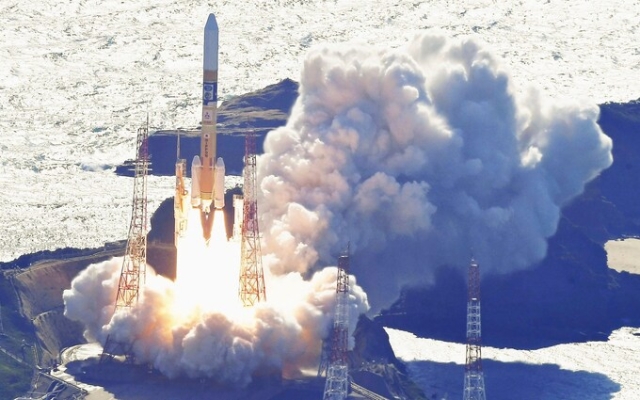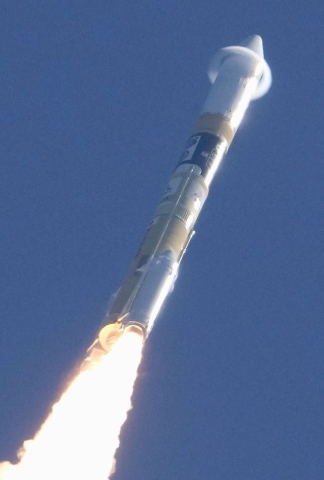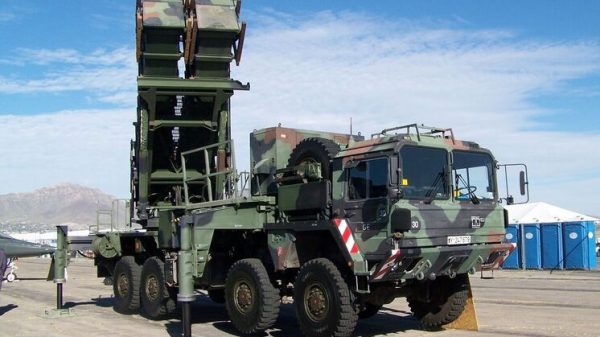 The launch has already been postponed three times due to bad weather. Credit: Kyodo News via AP
The launch has already been postponed three times due to bad weather. Credit: Kyodo News via AP
Japan's Moon Sniper mission kicked off Thursday as the country's space program looks to recover from a string of recent setbacks, weeks after India's historic lunar triumph.
Only the United States, Russia, China and India have successfully landed a probe on the moon as of last month, with two Japanese mission failures, one public and one private.
35,000 people watched the launch of the H-IIA rocket online. Early Thursday morning, a lander took off from the southern island of Tanegashima and is expected to land on the Moon's surface in early 2024.
To applause and applause at the mission control center, the Smart Lander for Investigating Moon (SLIM) probe and the XRISM space research satellite, developed jointly with the US and European space agencies, soon dispersed.
The launch had already been postponed. three times due to bad weather.
 The H-IIA rocket delivered the rocket of the country's space agency Lunar ship Photo: KYODO
The H-IIA rocket delivered the rocket of the country's space agency Lunar ship Photo: KYODO
The SLIM is nicknamed the «Moon Sniper» because it is designed to land within 100 meters of a specific target on the surface.
This is much less than the usual range of several kilometers.
«By creating the SLIM lander, people will make a qualitative shift towards the ability to land where we want, and not just where it is easy to land,» said the Japanese space JAXA before launch.
«By achieving this goal, it will be possible to land on planets even more scarce in resources than the Moon.»
Globally, «there have not been any previous cases of pinpoint landings on celestial bodies with significant gravity, such as the Moon,» the agency added.
> Japan Aerospace Exploration Agency members celebrate two previously failed missions Photo: Kyodo News via AP
XRISM will perform «high-resolution X-ray spectroscopic observations of the plasma wind of hot gas blowing through galaxies in the universe,» according to JAXA.
They will help to study «the flows of mass and energy, revealing the composition and evolution of celestial objects.»
The lander is equipped with a spherical probe co-developed with a toy company.
Slightly larger than a tennis ball, it can change shape as it travels across the Moon's surface.
Last month, India landed a craft near the southern the Moon's poles, a historic triumph for its low-cost space program. .
Its success comes days after a Russian probe crashed in the same region, and four years after India's previous attempt failed at the last minute.
Japan's miniature lunar rover
India also launched a probe on Saturday with scientific instruments to observe the outer layers of the Sun in a four-month journey.
Japan's past attempts have also failed, including last year when it sent a lunar probe called Omotenashi as part of the US mission » Artemis-1″.< /p>
The backpack-sized Omotenashi would have been the world's smallest lunar lander, but was lost.
And in April, Japanese startup ispace failed in its ambitious bid to become the first private the company landed on the moon, losing contact with its spacecraft after what it called a «hard landing».
Japan also had problems with launch vehicles, due to failures after the launch of the next generation H3. in March and the usually reliable solid-fueled Epsilon last October.
In July, a test of the Epsilon S rocket, an improved version of the Epsilon, ended in an explosion 50 seconds after ignition.




















































Свежие комментарии